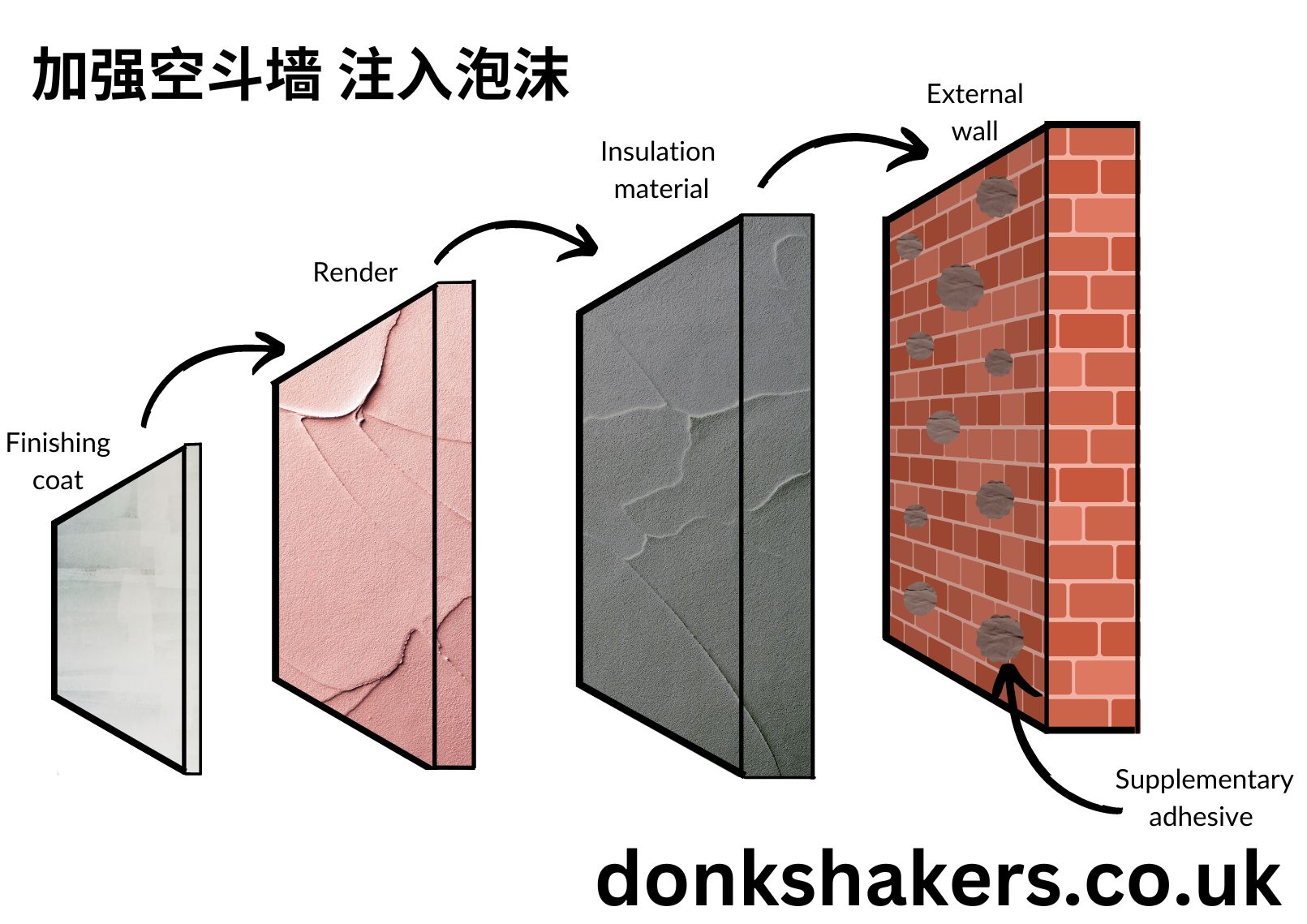Hollow walls, known as 空斗墙 in Chinese, are widely used in modern construction for their lightweight and cost-effective design. Despite their benefits, hollow walls can sometimes lack the necessary strength and insulation to meet modern standards. A proven method to improve their performance is to strengthen hollow walls and inject foam (加强空斗墙 注入泡沫). This comprehensive guide will provide detailed insights into this process, highlighting its benefits, techniques, and best practices.
Understanding Hollow Walls (空斗墙)
Hollow walls are constructed with two layers of material, such as bricks or concrete, separated by a cavity. This cavity reduces weight and provides basic insulation, but it may also weaken the wall’s structural stability and thermal efficiency. Addressing these shortcomings is essential for long-term performance.
Common Problems with Hollow Walls:
- Weak Structural Support: Hollow walls may buckle under heavy loads or harsh weather conditions.
- Energy Inefficiency: Heat escapes through the cavity, increasing energy costs.
- Moisture Penetration: Gaps in the walls can allow water ingress, leading to dampness and mold.
- Poor Soundproofing: Hollow walls may fail to block external noise effectively.
Why Strengthen Hollow Walls and Inject Foam (加强空斗墙 注入泡沫)?
Enhancing hollow walls through foam injection offers multiple benefits, including:
- Improved Durability: Strengthened walls can withstand external pressures, ensuring structural safety.
- Thermal Efficiency: Foam injection reduces heat loss, keeping interiors comfortable and reducing energy bills.
- Moisture Protection: Foam seals gaps, preventing water ingress and protecting the building.
- Noise Reduction: Foam-filled walls act as a sound barrier, enhancing indoor comfort.
- Environmental Benefits: Improved insulation reduces energy consumption, contributing to a greener footprint.
Foam Injection: A Key Solution
Injecting foam into the cavity of hollow walls is an effective method for reinforcement and insulation. The foam expands, filling gaps and providing a solid, insulating barrier.
Types of Foam for Injection:
- Polyurethane Foam (聚氨酯泡沫):
- Provides excellent thermal insulation and durability.
- Ideal for residential and commercial applications.
- Polystyrene Beads (聚苯沫珠):
- Lightweight and cost-effective.
- Offers decent insulation for budget-conscious projects.
- Phenolic Foam (酚胺沫):
- Fire-resistant and highly efficient.
- Suitable for areas with stringent safety requirements.
- Icynene Foam:
- Water-based, eco-friendly foam.
- Expands significantly, ensuring comprehensive cavity filling.
Step-by-Step Guide to Strengthen Hollow Walls and Inject Foam
1. Evaluate the Wall (评估墙体)
Before starting, inspect the walls for visible damage, such as cracks or damp patches. Address any issues to ensure the foam injection process is effective.
2. Clean and Prepare the Surface (清理和准备表面)
Clear debris and repair minor cracks or gaps. This ensures a smooth and efficient application of foam.
3. Drill Injection Holes (钻孔注入注点)
Drill small, evenly spaced holes into the walls to access the cavity. Proper spacing is essential for uniform foam distribution.
4. Inject the Foam (注入泡沫)
Using specialized equipment, inject the foam through the drilled holes. The foam expands to fill the cavity, sealing gaps and creating an insulating layer.
5. Seal the Holes (完善注孔)
After the foam sets, seal the holes with matching materials to restore the wall’s appearance and maintain its integrity.
6. Final Touches (最后处理)
Repaint or reapply finishes as needed. This step ensures the wall looks uniform and polished.
Benefits of Strengthening Hollow Walls and Injecting Foam (加强空斗墙 注入泡沫)
- Thermal Comfort (温暖舒适): Enhanced insulation keeps interiors warm in winter and cool in summer.
- Energy Savings (节省能源): Reduced heat loss lowers energy bills.
- Durability (耐用性): Reinforced walls have a longer lifespan.
- Noise Reduction (减少噪音): Foam’s density helps block external sounds.
- Moisture Resistance (耐湿性): Walls remain dry, preventing mold and dampness.
Common Mistakes to Avoid (避免常见错误)
- Skipping Wall Repairs (略过墙体修复): Unaddressed damage can compromise foam effectiveness.
- Using Incorrect Foam (使用错误沫料): Ensure the foam type matches your specific needs.
- Uneven Injection (注入不均匀): Poor techniques can lead to weak spots.
- Ignoring Moisture Issues (忽视湿流问题): Always inject foam into a dry cavity.
Maintenance Tips (维护提示)
- Conduct regular inspections to check for cracks or gaps.
- Address minor issues promptly to maintain wall integrity.
- Reinject foam if insulation efficiency decreases over time.
- Protect the wall’s exterior with weatherproof coatings.
Cost and Time Considerations (成本和时间考虑)
The cost of strengthening hollow walls and injecting foam depends on factors like wall size, foam type, and labor charges. Typically, the process ranges from $1,500 to $5,000 for a standard home and takes one to three days to complete.
Environmental Impact (环境影响)
Foam injection is an eco-friendly solution. It reduces energy consumption and greenhouse gas emissions. Many modern foams are made from sustainable materials, further minimizing environmental impact.
Conclusion (结论)
Strengthening hollow walls and injecting foam (加强空斗墙 注入泡沫) is a practical and efficient way to enhance the durability, insulation, and energy efficiency of a building. By following the steps outlined in this guide, you can ensure long-lasting results and improved living conditions. Whether you’re tackling this project yourself or hiring a professional, the investment will pay off in terms of comfort, safety, and property value. If you’re considering this method, act today to enjoy a stronger, more energy-efficient home.
